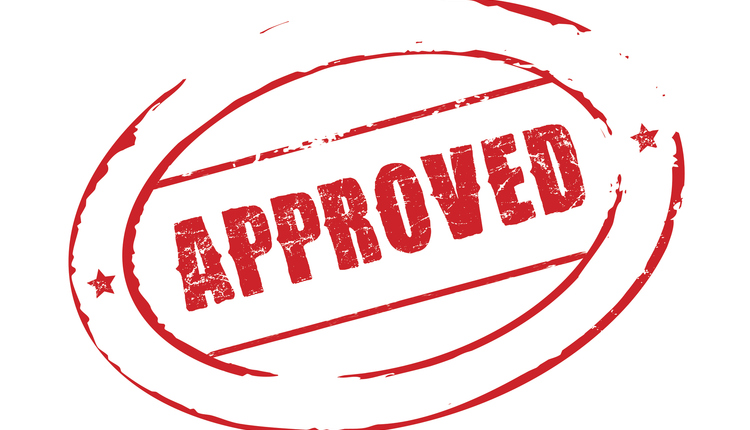I’ve asked hundreds of business owners what their marketing budget is. Most of them respond the same way: with silence! I know. Coming up with a marketing budget is boring. And confusing. But it is VITAL to your business success.
So I’m going to help you. Ready?
First, let me make a few things clear:
·There is no silver bullet, no one-size-fits-all solution. I’ll give you the tools to create the perfect budget for your business. There’s no top-secret trick that works for everyone.
·Think of these numbers as a starting point. This is the minimum you should be spending in order to grow your business. If you have wiggle room, you can always increase your budget — and growth will follow. That’s how this works. The more you put in, the more you get out. (As long as you’re spending it wisely, of course.)
·When a business owner needs to cut expenses, the first thing they cut is the marketing budget. This is always — ALWAYS — the wrong thing to do.
Okay. Let’s get to it. First things first: Your marketing budget should be a percentage of your gross revenue.
Example:
A-Plus Auto Accessories had a gross revenue of $500,000 in 2014. They assign 15% of that to marketing. 15% of $500,000 is $75,000 — so that’s their marketing budget for 2015 ($6,250 per month).
What percentage of your gross revenue should you use? It varies.
For example, if you’re a new business or your revenue tends to fluctuate significantly throughout the year, you should reassess your gross revenue quarterly — or even monthly — to get a better idea of what your marketing budget should be.
I’ve read that first-year businesses should use as much as 30% of their gross revenue — but, again, it varies. And, of course, the percentage is going to be different for different industries.
Don’t fall asleep! You can do this.
To make things easier, let’s work with three main categories of businesses. Find the one that’s right for your business and go from there.
1.Startup/New Product Launch
Startups need more marketing capital to get things rolling. Money will be tight at first, but think of it as an investment — because that’s what it is. You’re investing in your business!
Ideal percentage: 25-35%
Variables:
This is the most volatile situation your business can be in, which is why the range is so wide. Some industries are more competitive than others. If you’ve done your research, you’ll know where you stand. If competition is light, 25% should be enough. If competition is heavy, you simply have to invest more or you’ll never get off the ground.
Tip:
Rate your level of competition on a scale of 10. Lots of established competitors around? You’re at a 10. (Dentists frequently fall into this category.) Have a niche business with virtually no competition in the area? You’re a 1. Use this number to guide your marketing budget. The heavier the competition, the more you’ll need to spend.
It sounds intimidating, I know. But remember: You won’t be a startup forever! Once you’re established and bringing in a sustainable revenue, you’ll fall into the next category, where you can potentially lower that percentage.
2.Established, Growing Businesses
You’re growing, you’re prospering, you’ve got momentum. Don’t step off the gas now!
Ideal percentage: 12-18%
Variables:
Competition still factors in here, but what’s even more important to consider is your profit margin4. The average profit margin is 10-12%. The higher yours is, the more you can afford to spend on marketing.
Tip:
Let your competition help you set the bar, too — spend closer to 12% if competition is low, closer to 18% if it’s high — and then let your profit margin help you decide whether to bump that number up or down.
Examples:
A-Plus Auto Accessories is a growing business with low competition in the area, so they initially set their marketing budget at 13%. But they sell high-priced items with a significant profit margin (50%), so they increase their marketing percentage to 16% — because they can afford it.
B-Good Backyard Playsets is a growing business with average competition in the area, so they set their marketing budget at 15% to start. Their profit margin is only about 7%, however, so they bump their marketing percentage down to 13%.
Remember, this is just a starting point. Over time, you’ll see what impact your marketing percentage has on your revenue and can adjust as necessary.
Keep in mind that how you spend your budget is every bit as important as how much you’re spending. If you’re not seeing results, try changing the way you’re spending your percentage before you lower it!
3.Stagnant/Declining Businesses
If revenues are flat — or worse, going down — you need something to jolt your business back to life: more marketing. (It may not be the ONLY thing you need, but it’s definitely ONE of the things you need.)
Ideal percentage: +3-10% more than what you’re currently doing
Whatever your marketing budget is, bump it up by 3-10% for six months and watch what happens. (How much you increase it depends on your competition and the severity of your situation.) You should see the trend reversing after a couple of months and by six months know exactly what impact the change has had.
If you’re prospering again, only consider lowering the percentage if it is unsustainable at this level. If you can keep it up, do so and you’ll continue to grow.
If at this point you’ve only returned to stable revenues — or are still in decline — consider increasing the percentage again (and again) until you find the number that works.
If you’re not currently using the percentage method to set your marketing budget, figure out what the percentage is of the amount you’ve budgeted, then follow the guidelines above.
Example:
A-Plus Auto Accessories is a declining business that generated $500,000 in gross revenue in 2014. They budgeted $24,000 for marketing for 2015 ($2,000 per month), which is 4.8%. They would bump up their marketing percentage to a minimum of 8% ($3,333 per month) and measure the results on revenue.
Tip:
You may have to give up some of the luxuries you enjoyed while business was thriving. Embrace where you are now and do what is necessary to get your business growing again!
Not sure where to start? Download a FREE sample of a real marketing plan! Or you can call our experts at 800-628-1804 for a FREE consultation!
















